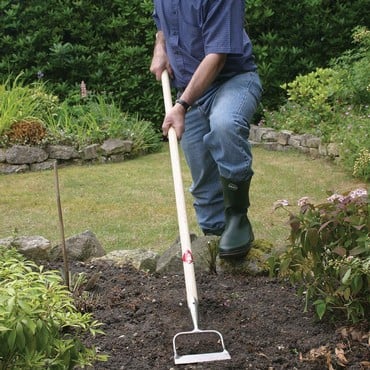Let’s talk about aubergines…
These delicious Mediterranean fruits have grown in popularity and are now widely found in many kitchens across the UK. Although the thought of growing them is daunting, the process can be simple providing you give them the right conditions. Despite the challenges, aubergines are definitely worth the effort and make for a delicious addition in curries, lasagne, bakes and risottos.
Did you know? Around the world, aubergine is known by 5 other names: Brinjal (India); Berenjena (Spanish); Eggplant (US English); Patlican (Turkish) and Melanzana (Italian).

The growing process
Pick your varieties
There are a wide range of varieties to choose from, so we’ve helped you out a little by highlighting our top 5 varieties for growing in the UK:
Black Beauty
This variety provides an excellent yield of shiny, near-black skinned fruit throughout the summer season, which can be used in an abundance of delicious Mediterranean dishes.
Gretel
These attractive, slender ivory fruits have few seeds, tender skin and a sweet flavour when harvested at just 3-4” long. With an exceptional flavour and texture, these mini aubergines are virtually seedless and perfect for baking or frying.
Bonica
Large, shiny purple, oval aubergines are produced very early on plants of compact, bushy habit with this variety. A high yielder and well-adapted to difficult growing conditions, Bonica is a great aubergine for both the beginner and the experienced gardener alike.
Ophelia
Throughout the summer, this compact aubergine produces an abundance of golf ball sized baby aubergines with no bitter aftertaste. They hold their flavour, quality and colour well after picking.
Black Enorma
An early to crop variety with prolific yields of substantial jet-black fruits weighing up to 680 grams. If you enjoy growing big veggies then this is the variety for you.
Growing
Aubergines love the warmth, so you’ll get the best results growing them in a greenhouse, a cold frame, or indoors near a window. Sow your seeds an inch deep into 9cm pots containing good quality seed compost. Place in a warm sunny location and water. Once the seeds have germinated, transfer plants to 23cm pots of compost and return to a warm sunny position. Continue to transplant into larger pots as the plants increase in size. If you plan to sow your seeds in an unheated greenhouse, we’d recommend waiting until late Feb/early March.
If you live in a warmer area of the UK, you can transfer your aubergine plants outside, but only once all risk of frost has passed. Allow a 90cm space between the plants. Control weeds by hoeing or hand weeding between plants and rows.
Aubergine care advice
- Make sure to stake and tie plants as they grow. They can grow tall and top-heavy
- Water regularly and feed with a high potassium liquid fertiliser like tomato feed every two weeks once the first fruits start to form
- Mist the leaves regularly to discourage red spider mites and improve fruiting
- When the plant reaches 30cm, pinch out the growing tip to encourage side shooting
- Once the side shoots begin to develop a fruit, remove all other flowers from that shoot to encourage a larger ripe fruit
Harvesting
Harvest your fruits individually as soon as they appear ripe, with a glossy skin. Treat the fruits carefully as they are prone to bruising. Do not pull off the fruit, cut the fruit off with a sharp knife or fruit snips close to the stem above the green cap on the top, leaving about an inch of it attached.
Tip: The stems can be prickly, so gloves are helpful!
Other uses for your surplus aubergines
Surprisingly, aubergines are super versatile and work really well in many dishes, from stews and curries to salads and pasta dishes. Check out our selection of easy uses for your leftover aubergines below:

Aubergine bacon
Yes, you read that correctly. Aubergine is a perfect bacon substitute. Thinly slice an aubergine lengthways. Meanwhile, combine maple syrup, paprika and garlic granules in a bowl. Lay your aubergine slices onto a lined baking tray and spray liberally with oil. Cook for 10-15 minutes or until beginning to crisp, then brush with the maple syrup mixture and cook for a further 5 minutes until super crispy. Add your ‘bacon’ to a traditional caesar salad for some added crunch.
Traditional Melanzane Parmigiana
This Italian classic is delicious, warming and incredibly moreish. Slice your aubergines lengthways and brush both sides with olive oil. Lay them on baking sheets and cook for 30-40 minutes, until the slices are tender and golden. Heat some oil in a pan and add garlic, tomatoes, passata sugar, vinegar, bay leaves and oregano. Leave to simmer for 20 mins until thickened. Spoon some of the sauce mixture into the bottom of a large dish and cover with a layer of aubergine and mozzarella. Repeat the process, ending with a thin layer of sauce. Sprinkle with parmesan and bake for 40 minutes, or until bubbling, golden and piping hot.
Perfectly roasted aubergine
There’s nothing worse than mushy, messy aubergine. Follow this simple yet rewarding recipe for perfectly crunchy morsels. Line a baking tray with parchment paper and slice your aubergine into large cubes. Add them all to a large bowl and drizzle with oil, salt and pepper. Toss well, spread on your lined tray and roast for 20 minutes. Turn, then roast for a further 10 minutes. Serve with your choice of dips or plain.




























